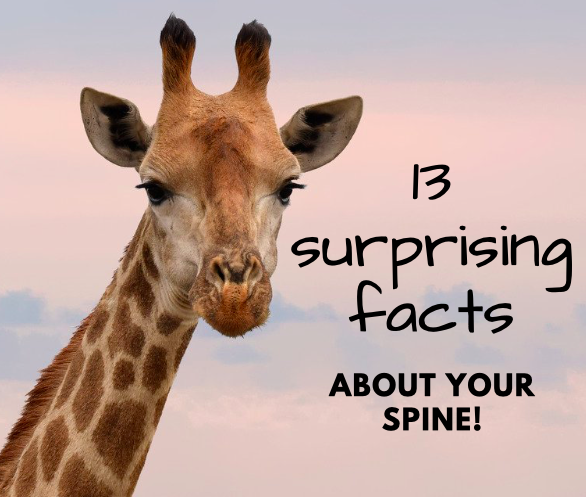Welcome to Facts Vibes! In this article, we delve into intriguing facts about the spine. From its intricate structure to its vital role in everyday movement, we unravel the mysteries and marvels of this essential part of the human body. Let’s explore the spine like never before.
The Incredible Anatomy of the Spine: Fascinating Facts to Explore
The spine, also known as the vertebral column, is a remarkable structure that plays a vital role in supporting the body and protecting the spinal cord. It is made up of a series of vertebrae, each with its own unique characteristics and functions.
One fascinating fact about the spine is its incredible flexibility and strength. Despite being flexible enough to allow a wide range of movements, the spine is also strong enough to support the weight of the body and withstand various forces.
Another intriguing aspect of the spine is its complex anatomy. The vertebrae are cleverly designed to provide stability and support while allowing for mobility. Additionally, the intervertebral discs act as shock absorbers, cushioning the vertebrae and preventing them from rubbing against each other.
The spine is also home to the spinal cord, a crucial part of the central nervous system. This essential structure transmits messages between the brain and the rest of the body, controlling movement, sensation, and various bodily functions.
Understanding the incredible nature of the spine’s anatomy can lead to a greater appreciation of its significance in our overall health and well-being. It serves as a constant reminder of the marvels of the human body and the intricacies of its design.
Exploring the intricacies of the spine’s anatomy provides valuable insights into the importance of maintaining spinal health and seeking proper care when needed.
The spine truly stands as a testament to the remarkable complexity and ingenuity of the human body, highlighting the extraordinary capabilities of this central structure that supports and sustains us throughout our lives.
Most popular facts
The human spine is made up of 33 individual bones called vertebrae.
Yes, the human spine is indeed made up of 33 individual bones called vertebrae.
The spine can be divided into five regions: cervical, thoracic, lumbar, sacral, and coccygeal.
The spine can be divided into five regions: cervical, thoracic, lumbar, sacral, and coccygeal.
The spinal cord, a major part of the central nervous system, runs through the vertebral canal formed by the vertebrae.
The spinal cord runs through the vertebral canal formed by the vertebrae.
Intervertebral discs act as cushions between each vertebra, allowing for flexibility and shock absorption.
Intervertebral discs act as cushions between each vertebra, allowing for flexibility and shock absorption.
The spine provides structural support for the body and protects the spinal cord and nerves.
The spine provides structural support for the body and protects the spinal cord and nerves.
The cervical spine, located in the neck, consists of seven vertebrae and supports the head’s weight and allows for a wide range of motion.
The cervical spine, located in the neck, consists of seven vertebrae and supports the head’s weight and allows for a wide range of motion.
The thoracic spine, made up of 12 vertebrae, provides attachment points for the ribs and protects the vital organs in the chest area.
The thoracic spine, made up of 12 vertebrae, provides attachment points for the ribs and protects the vital organs in the chest area.
The lumbar spine, comprising five vertebrae, bears most of the body’s weight and is responsible for lower back support and movement.
The lumbar spine, comprising five vertebrae, bears most of the body’s weight and is responsible for lower back support and movement.
The sacral and coccygeal regions consist of fused vertebrae and provide support for the pelvic girdle and tailbone.
The sacral and coccygeal regions consist of fused vertebrae and provide support for the pelvic girdle and tailbone.
Spinal curvature abnormalities, such as scoliosis or kyphosis, can affect the spine’s alignment and cause health problems.
Spinal curvature abnormalities can affect alignment and cause health problems.
The spine is crucial for maintaining posture, balance, and overall body movement.
The spine is crucial for maintaining posture, balance, and overall body movement.
Spinal injuries, such as fractures or herniated discs, can lead to pain, weakness, and neurological deficits.
Spinal injuries can lead to pain, weakness, and neurological deficits.
Exercise and proper ergonomics are important for maintaining a healthy spine and preventing back problems.
Exercise and proper ergonomics are important for maintaining a healthy spine and preventing back problems.
Degenerative conditions like arthritis and osteoporosis can affect the spine and lead to stiffness, pain, and reduced mobility.
Degenerative conditions like arthritis and osteoporosis can affect the spine and lead to stiffness, pain, and reduced mobility.
Regular check-ups and screenings help in identifying and addressing spine-related issues early, improving overall spinal health.
Regular check-ups and screenings help in identifying and addressing spine-related issues early, improving overall spinal health.
In conclusion, the spine is a remarkable and essential part of the human body, playing a crucial role in supporting the body’s structure and protecting the spinal cord. Understanding the facts about the spine helps us appreciate its complexity and the need to prioritize its care and health. It is crucial to educate ourselves and others on how to maintain a healthy spine to lead a fulfilling and active life.
